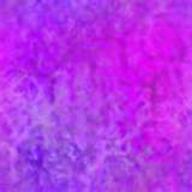Have you seen the beautiful conjunction of Venus and Jupiter in the sky tonight?
2012-03-13 2:30 am
They are only 2-3 degrees apart and in Taurus. Step outside and enjoy the Free Show in the Sky Tonight. Planets do not "twinkle" like stars do so you shouldn't have any trouble finding these lovely planets "holding hands." Good night for a party I imagine! Enjoy!!!
回答 (8)
2012-03-13 4:15 am
✔ 最佳答案
...been watching them get closer & closer the last three, four weeks or so... and since the lighting in NYC washes away most of the stars, it's easy to see Venus & Jupiter...As for Mars & Mercury...
well Mars is in Virgo so wherever you see Venus & Jupiter, Mars will be there about 7 hours later... (two hours a sign... roughly by midnight Mars should be straight up in the middle of the sky, where the sun would be if if is noon... after all, the sun is in Pisces and Mars in in Virgo, exactly opposite the sun)
Mercury however is following the sun right now, so by the time it rises, it is daylight already... MAYBE if you look low to the west right after the sun sets, you might see it for maybe 30 minutes if it is dark enough.
2012-03-13 3:04 am
awesome.. they're both conjunct my moon a.t.m.
haven't seen it though
thanks amethyst
.. you're the beauty ;)
haven't seen it though
thanks amethyst
.. you're the beauty ;)
2012-03-13 2:39 am
So beautiful! Does it mean anything astrologically? Because both my Venus and Jupiter are in Aries.
2012-03-13 2:32 am
yes, quite beautiful. i believe mercury and mars are visible as well on the horizons... but theyre pretty low in the sky so probably cant see them
2012-03-13 9:35 am
With all that beauty in the sky, why am I unhappy and alone?
2012-03-13 3:47 am
No... When the planets are align I will see the sky.
參考: Venus in Virgo,Jupiter in Scorpio
2012-03-13 9:14 pm
It look pretty cool when it sets on the west coast
2016-09-11 2:46 pm
My reply to ur query ~Got it from my Science Book ~The colorations that we see within the sky don't seem to be best observed by means of the legislation of physics, however also are coloured by means of the human visible method, suggests a brand new paper within the American Journal of Physics. On a transparent day whilst the solar is good above the horizon, the evaluation demonstrates, we understand the tricky spectrum of colours within the sky as a combo of white gentle and natural blue. When daylight enters the earth's surroundings, it scatters (ricochets) customarily from oxygen and nitrogen molecules that make up so much of our air. What scatters essentially the most is the sunshine with the shortest wavelengths, toward the blue finish of the spectrum, so extra of that gentle will achieve our eyes than different colours. In the early nineteenth century, physicist John William Strutt, greater recognized by means of his identify, Lord Rayleigh, wrote equations to exhibit how gentle scatters within the sky. And in latest years Raymond Lee of the U.S. Naval Academy, Annapolis, MD, measured gentle coming from a noonday sky. Both equations and measurements confirmed that top quantities of violet gentle achieve our eyes too. So what is going on? Combining physics with quantitative information at the responsiveness of the human visible method, Glenn Smith of the Georgia Institute of Technology in Atlanta, features to the best way where our eye's 3 distinctive varieties of cones notice colour. Cones are cells within the eye that notice colour. They lie alongside the again of the attention, the retina, amidst gentle and movement sensing cells referred to as rods. The eyes have 3 types of cones, every tuned to distinctive levels of colour. When a wave of sunshine moves the attention, the cones ship a sign to the mind. If a blue wave, with quick undulations, enters the cone, the cone sends a sign to look blue. If a purple wave, with lengthy humps, hits the cones, the mind sees "purple." But if a purple wave and a inexperienced wave input while, the attention's quite a lot of cones ship a sign that the mind translates because the in-among colour of yellow. As Smith suggests, the sky's tricky multichromatic rainbow of colours tickles our eye's cones within the equal means as a designated combo of natural blue and white gentle. The cones that permit us to look colour are not able to determine the exact wavelengths that hit them, but when they're motivated by means of the correct blend of wavelengths, then it is going to look the equal to our eyes as a unmarried natural colour, or a combo of a natural colour and white gentle. And that's why the sky is blue – or turns out so.
收錄日期: 2021-04-11 19:00:27
原文連結 [永久失效]:
https://hk.answers.yahoo.com/question/index?qid=20120312183009AAShNIk





